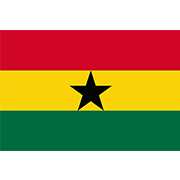Fiscal subject related
Every valid E-VAT receipt must contain a readable QR code. The Ghana Revenue Authority (GRA) mandates this as part of this tax document to ensure its verifiability. The QR code contains important information such as the taxpayer's TIN (Taxpayer Identification Number), invoice signature, total amount, total taxes, and the invoice date and time.
Customers can use any smartphone or QR code scanning device to scan the QR code. Upon scanning, the data is cross-checked with the GRA's back-office system to confirm the invoice's authenticity. This process ensures that the invoice is duly registered with the GRA and compliant with the fiscal regulations.
Also, customers may try to verify if the key details are present on the receipt. This means ensuring that the E-VAT receipt/invoice contains critical information like the seller's company name, TIN, location and address, invoice number, date and time, item data, and tax amounts. It should also include the signature generated by the certified system, which acts as proof of authenticity.
In addition to scanning the QR code, customers can verify the E-VAT invoice and receipt via the GRA’s online portal. The portal provides real-time verification where customers can input details from the receipt to confirm its validity.
Other news from Ghana
The Ghanaian GRA announced simpler VAT rules and further EFD adoption.
 Ghana
Author: Tara Nedeljković
Ghana
Author: Tara Nedeljković
Ghana’s GRA will fully enforce the 2018 Taxation Act on Fiscal Electronic Devices (EFDs) by early 2026, requiring specified taxpayers to use approved devices at every point of sale to ensure accurate transaction reporting and curb underreporting. The reforms will also lower the effective VAT rate from 21.9% to 20% by removing the COVID levy and restructuring other charges, while keeping input VAT fully deductible for businesses. Read more
Subscribe to get access to the latest news, documents, webinars and educations.
Already subscriber? Login


How the process of receipt signing works under current Ghana's fiscalization requirements
 Ghana
Author: Tara Nedeljković
Ghana
Author: Tara Nedeljković
Under Ghana’s E-VAT system, each fiscal receipt must carry a unique electronic signature generated through real-time communication with the Ghana Revenue Authority (GRA). The process involves two steps: transmitting transaction data to receive a sequence number, then requesting and applying a signature key from the GRA to finalize the receipt. Read more
Subscribe to get access to the latest news, documents, webinars and educations.
Already subscriber? Login


How to record returns inside the Ghana fiscalization system?
 Ghana
Author: Tara Nedeljković
Ghana
Author: Tara Nedeljković
These return documents are generated through certified invoicing systems, include all key details (like receipt numbers and QR codes), and ensure compliance with Ghana Revenue Authority (GRA) rules. The system supports both online and offline modes, allowing provisional QR code issuance during outages, with automatic tax calculation and real-time updates to the GRA. In Ghana, handling retu... Read more



TLv6 Implementation Marks Significant Shift in EU’s Trust List Format
A new EU Trust List format, TLv6, will officially replace TLv5 in May 2025 as part of the updated eIDAS Regulation (EU 2024/1183). It introduces key technical changes like a new URI field, updated signature format, and optional phone number support. Organizations must update their systems to avoid signature validation failures and service disruptions, as TLv5 will no longer be valid once TLv6 take... Read more



New document was uploaded: Recorded webinar: E-invoicing for Global Retailers
If you are struggling with complex e-invoicing implementations across multiple countries, and if you are concerned about mounting costs, potential delays, or compliance risks, our webinar will help you to learn how global retailers can streamline e-invoicing efficiently! With countries worldwide mandating e-invoicing, international retailers face unique challenges adapting to new regulations acros... Read more



Is the offline regime of work from a retail store in Ghana possible, and if so, how?
 Ghana
Author: Tara Nedeljković
Ghana
Author: Tara Nedeljković
Based on the current requirements, retailers can request to operate in an offline mode with the intervention of the Ghana Revenue Authority (GRA) but only under specific conditions that were defined by the GRA. Read more
Subscribe to get access to the latest news, documents, webinars and educations.
Already subscriber? Login

